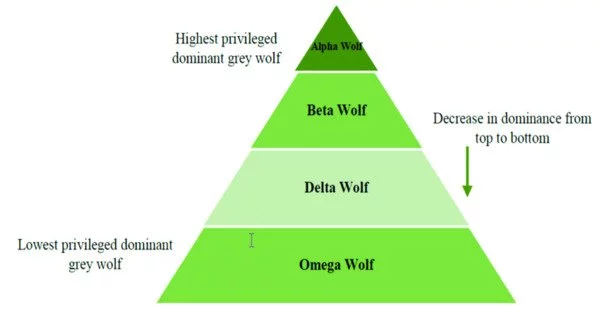A dominance hierarchy (also known as a pecking order) is a type of social hierarchy that forms when members of animal social groups interact, resulting in a ranking system. Individuals higher in the dominance hierarchy have preferential access to resources such as food, mates, and territory. They can also exert control or influence over individuals of lower rank. Various forms of social interaction, such as aggressive displays, fights, or ritualised behaviours, are commonly used to establish the ranking order.
Within a social group, dominance hierarchies serve several purposes. They contribute to the reduction of conflict and the establishment of social order by providing a clear structure and reducing the need for constant aggression. They also help with resource allocation because individuals with higher ranks have first dibs on limited resources. By providing stability and predictability within the social structure, dominance hierarchies can also contribute to group cohesion and cooperation.
A dominant higher-ranking individual is referred to as an alpha, while a submissive lower-ranking individual is referred to as a beta. Depending on the species, various interactions, such as ritualised displays of aggression or direct physical violence, can result in dominance.
Members of social living groups are likely to compete for limited resources and mating opportunities. Rather than fighting every time they meet, individuals of the same sex establish relative rank, with higher-ranking individuals frequently gaining more access to resources and mates. A social order is formed through repeated interactions, and it is subject to change whenever a dominant animal is challenged by a subordinate one.
Individuals who are dominant typically have certain advantages and may have more opportunities for reproduction and survival. They frequently hold the highest positions in social interactions and wield power over subordinates. Subordinates, on the other hand, are lower in the hierarchy and may face limitations in their access to resources.
Within animal groups, dominance hierarchies serve several functions. They contribute to conflict reduction by establishing clear social roles and limiting direct confrontations between individuals. The hierarchy also promotes group cooperation, coordination, and division of labour. Furthermore, dominance hierarchies can influence reproductive success because dominant individuals frequently have better access to mates.
















